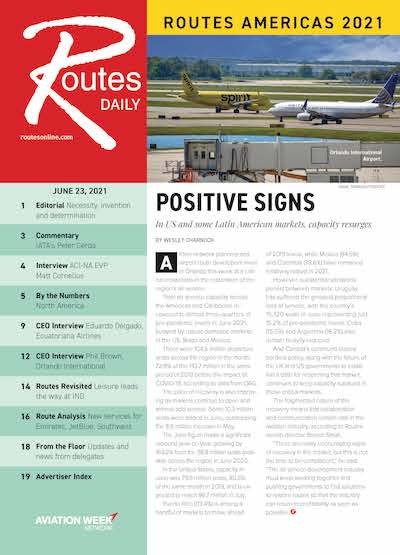
The imperative for clear and open communication and collaboration between destinations, airports and their airline partners has never been greater.
Network planners have adapted to the rapidly changed environment with evaluation and re-evaluation of networks and by identifying new opportunities through creative thinking. In this new world, catchment analysis, passenger intention data, and local knowledge are arguably more useful than traditional data sets such as historical passenger flows, O&D demand and fare data.
Above all, the US domestic market, along with those of some of its southern neighbors like Mexico and Brazil, are shining examples of a strong demand for air travel where restrictions are lifted. This is readily apparent in US domestic travel, which has rebounded so strongly that the country has regained its status as the world’s largest air transport market after being eclipsed by China for the full year of 2020.
By June, the US accounted for 26.2% of all global air capacity, pushing China back into second place at 23.2%. Russia was a distant 3.8%.
Despite serving a mature market, US carriers are finding creative opportunities. The new Breeze Airways, for example, and the newly independent ExpressJet are each focused on point-to-point connections between smaller, underserved cities. At its launch in May, Breeze had no direct competition on 95% of its routes.
Brazil is also seeing strong demand for domestic travel. Domestic capacity is on the rise, by 21.8% in May and 17.7% in June. And in Mexico, some 83.1% of pre-pandemic domestic capacity has been restored.
For the airlines of other countries in the region, continuing restrictions on air travel and free movement make network recovery much more difficult, most notably in Argentina, Canada, and Chile. Despite this, creativity and ambition continue. Air Canada plans to restore dozens of domestic routes this summer. Ultra-LCC Swoop will add three new US destinations this winter.
Governments must match the ambitions and inventiveness of airlines and airports for the sakes of their economies and citizens who want to fly for personal or business reasons and who, as scientific data prove, can do so safely.
WTTC research shows that reduced travel and tourism income wiped $59.2 billion from Canada’s economy last year. Despite this, no clear roadmap to reopening Canada’s border with the US—and to America’s largest trade partner—exists.

Routes Daily
In 2019, the US was the largest source market for the UK in terms of visitor numbers, while the UK was the third-largest source market for the US. However, US president Joe Biden and UK prime minister Boris Johnson, meeting in the UK for the G7 Summit, failed to announce a timeline for restoring transatlantic travel.
Travelers to and within the Americas bring with them revenue far beyond their airfare. Business deals are struck, convention centers fill, hotels and restaurants become vibrant meeting places, taxis and local commuter links are in demand. The economic and cultural benefits radiate throughout the cities where they operate.
The air industry is working collaboratively, creatively and intelligently to earn the trust of its customers that they can travel safely. Governments can and should do the same for their citizens and economies. Working together, everyone wins.
Photo credit: Getty Images / Grant Faint
